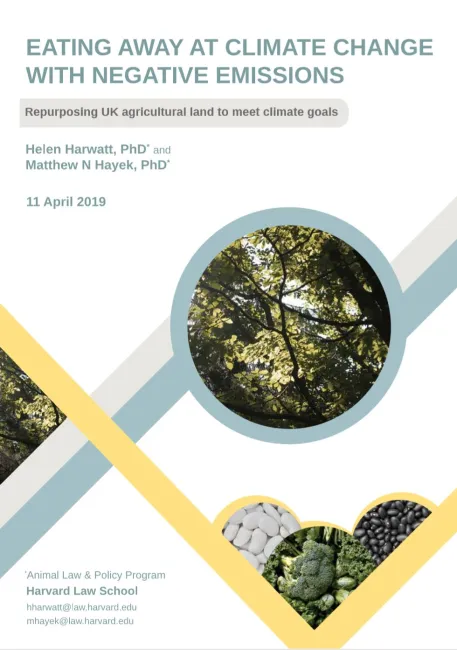This report from the Animal Law and Policy Programme at Harvard Law School estimates the carbon sequestration potential of converting UK land currently used for animal agriculture into native forest. The remaining cropland is enough to provide more than the recommended calories and protein for all UK residents, according to the authors.

The report looks at two scenarios:
- Both pasture land and cropland that is currently used to produce animal feed are converted to forest. This removes as much carbon from the atmosphere as is equivalent to 12 years of current UK emissions.
- Only pasture land is converted to forest, with all current cropland used to produce food for direct human consumption. This removes carbon from the atmosphere that is equivalent to 9 years of current UK emissions.
The report argues that reforesting these areas of farmland would also produce benefits for wildlife. Carbon removal potential was based on the average of six maps of potential vegetation rates for temperate climates. In both scenarios, it was assumed that carbon uptake becomes saturated after 30 years, and that the forest that regrows is mostly oak, sycamore, ash, beech and birch in England, Wales and Northern Ireland, and Scots pine in Scotland.
See media coverage of the report here:
- UK could slow climate clock by converting animal farmland to forest and still grow enough protein (The London Economic)
- Research shows UK could slow climate change by converting animal farmland to forest (Vegan Food & Living)
- Harvard research suggests afforestation could slow climate change clock (AgriLand)
Read the full report, Eating away at climate change with negative emissions: Repurposing UK agricultural land to meet climate goals, here (PDF link) and read the press release here. See also the Foodsource building block What is land use and land use change?




Comments (0)